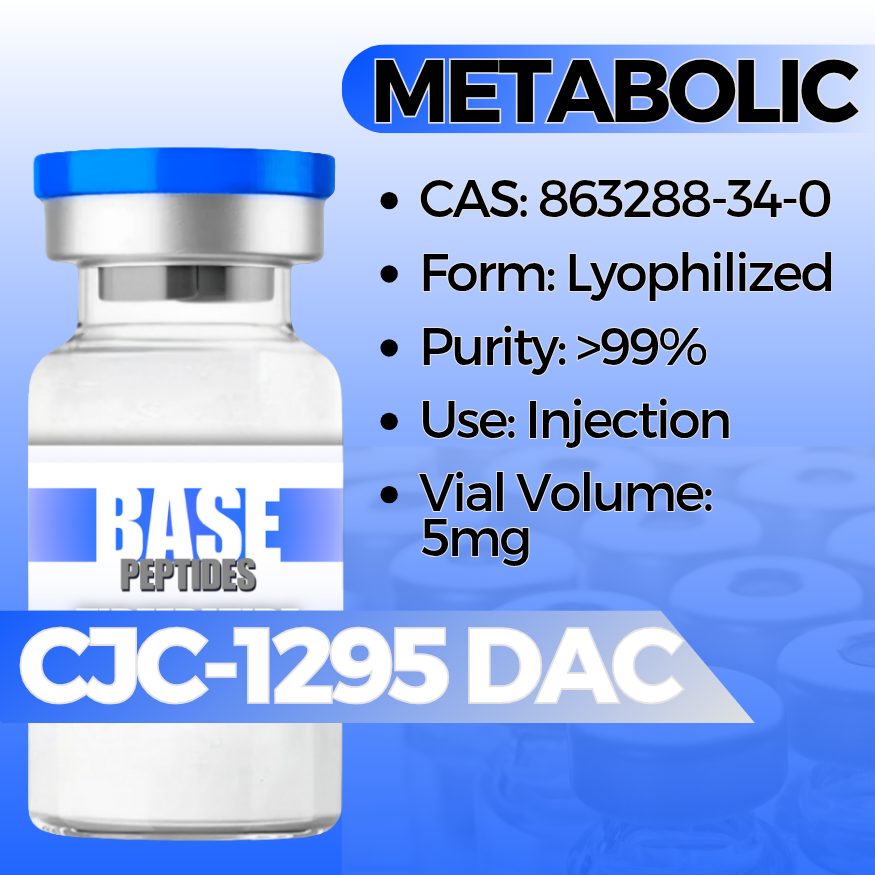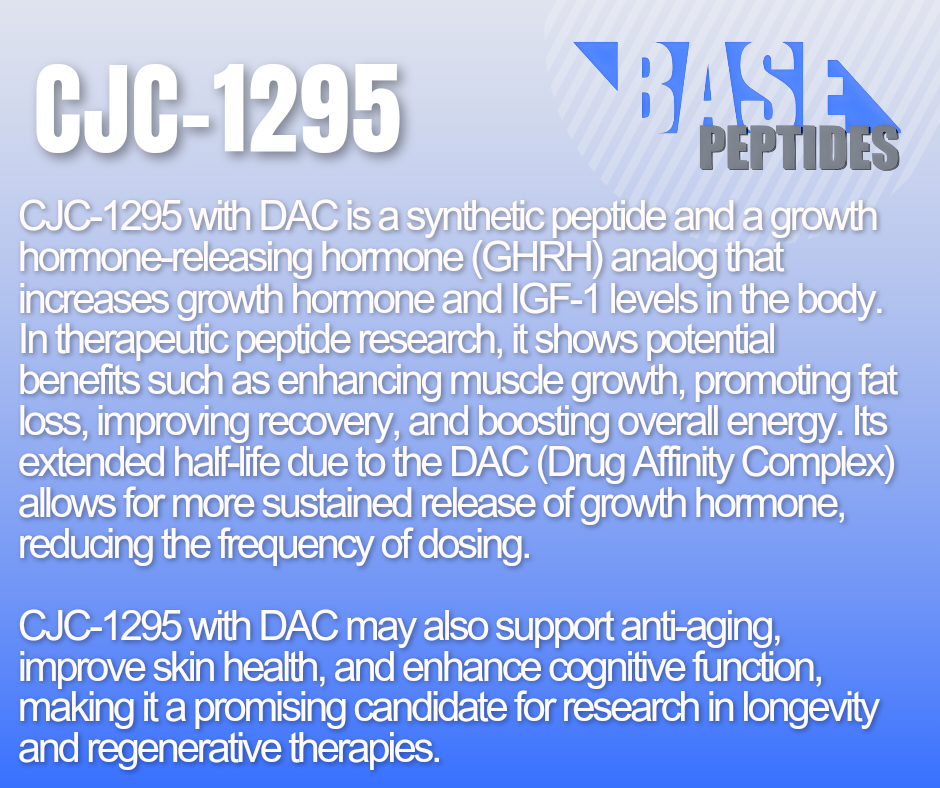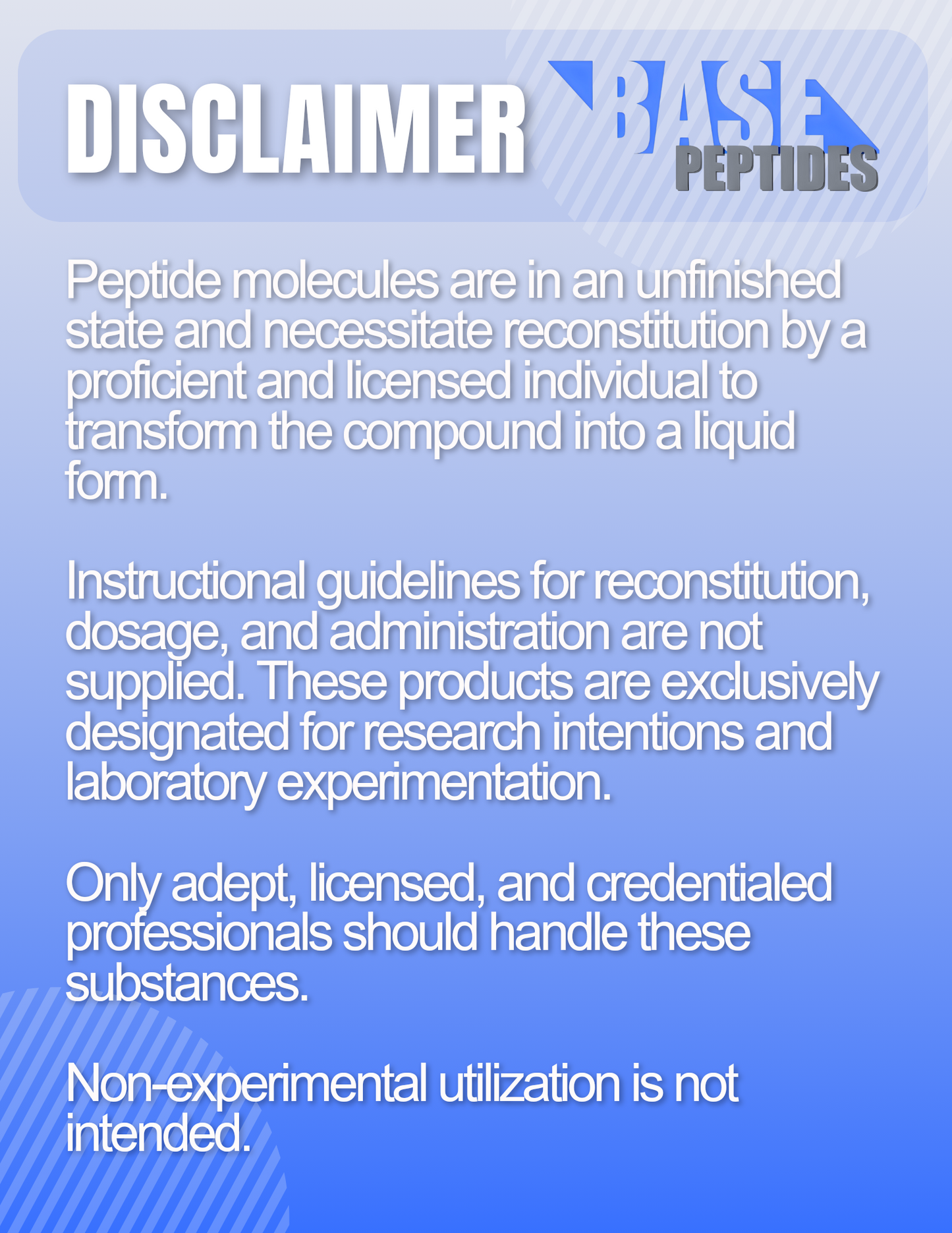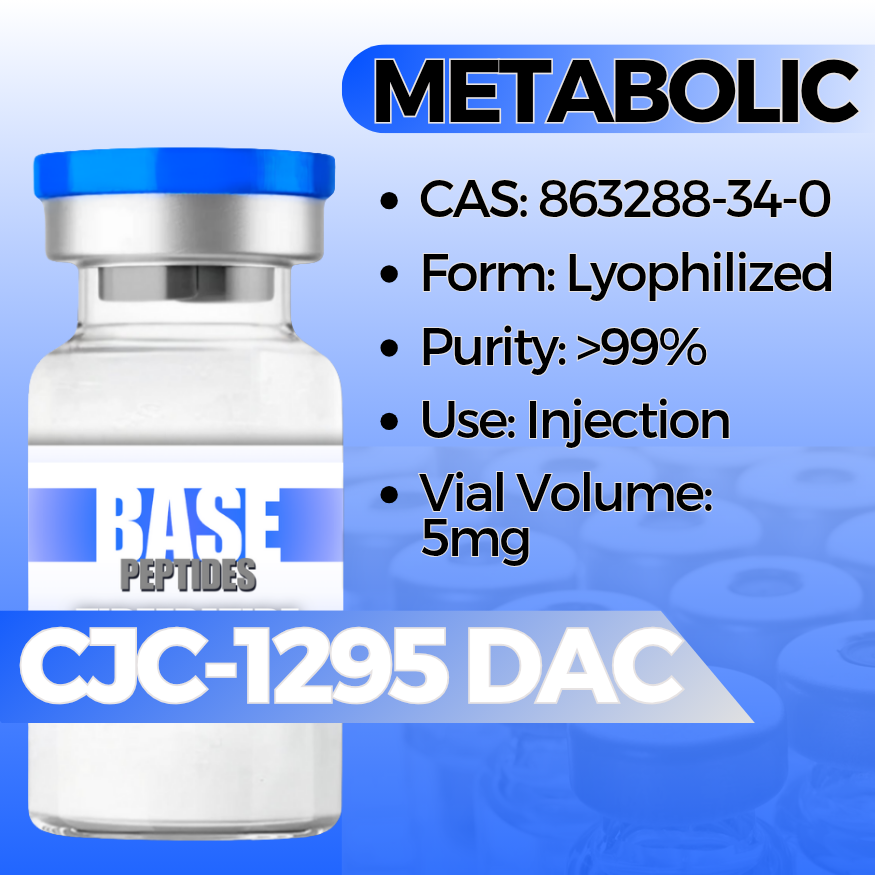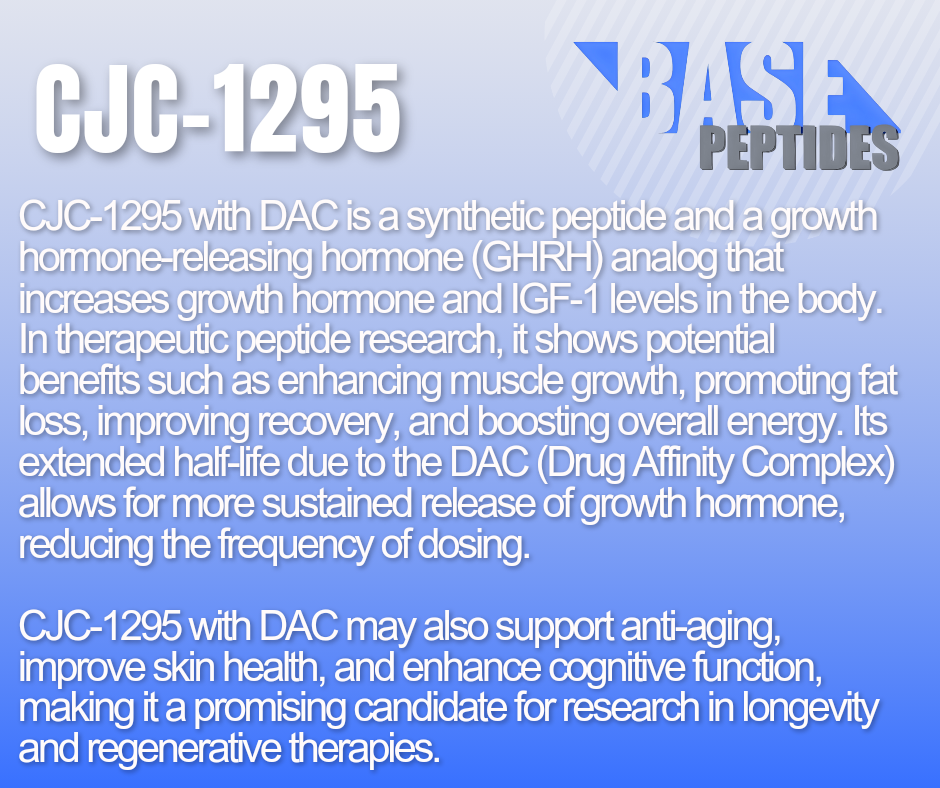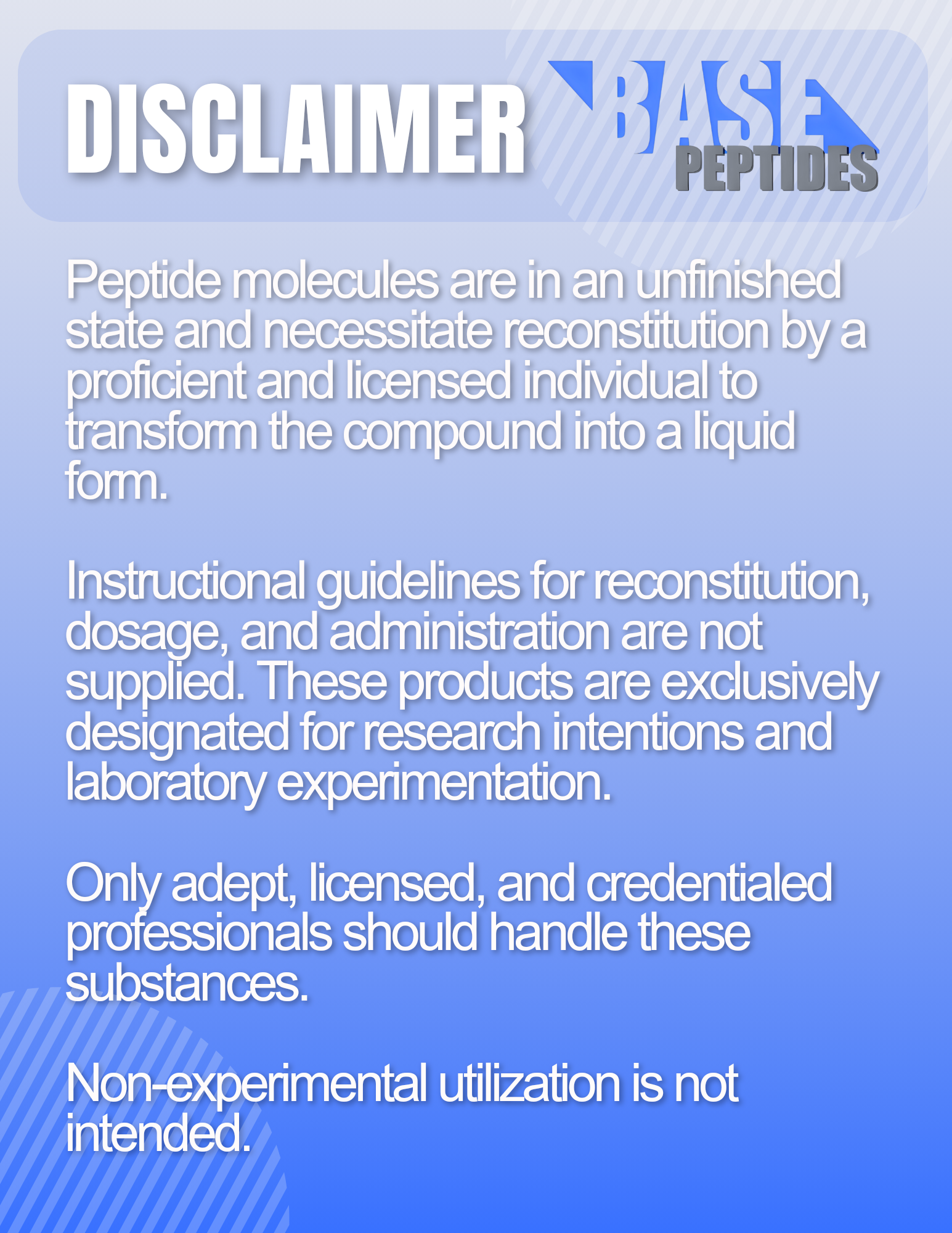CJC with DAC
CJC with DAC
Base Peptides are intended for licensed medical professionals and experienced researchers. Reconstitution required. Dosing and use instructions are not provided.
Couldn't load pickup availability
CJC-1295 (with DAC) — Long-Acting GHRH Analogue
CJC-1295 is a synthetic analogue of the body’s natural Growth Hormone–Releasing Hormone (GHRH). When paired with a Drug Affinity Complex (DAC), it binds to albumin in the bloodstream, giving it a much longer half-life. Researchers use it to explore growth-hormone (GH) pulse patterns, IGF-1 dynamics, and long-duration endocrine signaling.
- CAS: 446262-90-4
- PubChem CID: 56841945
- Formula / MW: C165H269N47O46 · ≈3,364 Da
- Sequence: Modified GHRH fragment with a DAC group that extends its duration
- CJC-1295 binds to the same receptor as natural GHRH in the pituitary gland.
- The DAC portion helps it stay active in the bloodstream for days instead of minutes.
- This allows researchers to study how sustained GH and IGF-1 levels influence metabolism, body composition, and recovery markers.
- To compare short- vs long-acting GHRH analogues.
- To analyze GH pulse frequency, amplitude, and downstream IGF-1 responses.
- To investigate how extended GHRH stimulation influences lipid, glucose, and muscle biomarkers.
Key Studies — What Was Tested, What Changed, Why It Matters
Early human and preclinical studies (GH/IGF-1 kinetics)
- What was tested: CJC-1295 (with DAC) was administered in single and multiple-dose studies to measure GH pulses and IGF-1 levels over time.
- What changed: A single dose maintained elevated GH and IGF-1 for up to a week—far longer than short-acting GHRH analogues, which last only minutes to hours.
- Why it matters: Demonstrates how modifying GHRH structure can extend its biological window, giving researchers a tool to study chronic GH exposure rather than brief pulses.
Comparative signaling vs short-acting GHRH analogues
- What was tested: GH pulse and IGF-1 profiles with CJC-1295 (DAC) compared to short peptides like Mod GRF (1-29).
- What changed: CJC-1295 produced fewer but higher-amplitude GH pulses and a more sustained rise in IGF-1.
- Why it matters: Allows exploration of the difference between frequency-based and amplitude-based GH signaling, useful in endocrine and metabolic research.
Metabolic and recovery applications (animal models)
- What was tested: Long-term CJC-1295 exposure in animal studies monitoring lean-mass, fat-mass, and glucose markers.
- What changed: Data suggest shifts toward greater lean-tissue synthesis and modest fat reduction, consistent with GH/IGF-1 activity.
- Why it matters: Provides insight into how long-duration GHRH analogues can shape energy use and tissue remodeling in controlled research settings.
Potential Research Applications
Endocrine & GH Axis Studies
- GH pulse mapping and IGF-1 response curves
- Receptor-sensitivity and binding-protein studies
Metabolic & Composition Models
- Lean vs fat-mass imaging (MRI/DEXA)
- Lipid, glucose, and insulin-sensitivity markers
Comparative Peptide Dynamics
- Short- vs long-acting GHRH analogues
- Half-life, binding, and dose-response evaluation
Synergistic Peptides (for Study Design)
Ipamorelin
- Why pair: Activates a different receptor (GHSR) that complements the GHRH pathway.
- Angle: Dual-pathway experiments (GHRH + GHSR) can clarify combined GH pulse effects and metabolic outcomes.
Tesamorelin
- Why pair: Used as a comparator to explore differences in duration and specificity of GHRH analogues.
- Angle: VAT, IGF-1, and GH-kinetic studies comparing analogues side-by-side.
Sermorelin / Mod GRF (1-29)
- Why pair: Short-acting analogues ideal for pulse-timing or frequency studies.
- Angle: Compare rapid vs sustained GH signaling effects in metabolic or tissue-repair assays.
Design Notes
- Track GH and IGF-1 sampling intervals closely—CJC-1295 alters the expected timing curve.
- Use standardized assays to compare DAC vs non-DAC versions.
- Document duration and exposure for reproducibility.
Known Concerns (Context)
- Assay timing: Extended half-life means sampling schedules must be adjusted to avoid under- or over-estimating GH peaks.
- Receptor overlap: Distinguish GHRH-mediated activity from GHSR-mediated signals when using combo protocols.
- General: As with all peptides, intended for research use only; not a therapeutic compound.
Follow institutional protocols and oversight when designing endocrine or metabolic experiments.
Specifications & Handling
- Form: Lyophilized powder (lot-coded)
- Purity: ≥ 99% (HPLC/MS; lot-verified)
- Storage: ≤ −20 °C; protect from light/moisture
- In solution: Aliquot promptly; avoid repeat freeze–thaw
- Additives: None unless specified per lot
- Packaging: Tamper-evident, research-only labeling
Regulatory & Use Notice
Sold for laboratory research use only. Not for human consumption, medical, or veterinary use. No human-use instructions are provided. Buyer is responsible for safe handling and regulatory compliance.
CJC-1295 DAC Peptide Research | Long-Acting GHRH Analogue | GH & IGF-1 Dynamics Studies
